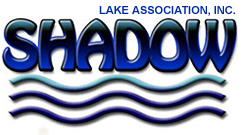‘Lake Wise’ Vermont Lakeshore Management
Lake Wise practices apply to the land surrounding a lake that is within 250 feet of the lake’s mean water level. Lake Wise is a program of the Vermont Agency of Natural Resources providing a suit of Best Management Practices (BMP’s) for lakeshore landscaping and shoreland restoration. Managing Vermont lakeshores according to consistent practices, that are proven to protect and benefit the lake, will maintain property values, good water quality, aquatic habitat, fishing, swimming, boating, bird-watching and more favorite lake activities. Using Best Management Practices ensures lakeshore conditions are met. The Lake Wise Program offers technical assistance to shoreland property owners who want to learn more about making their property as lake friendly as possible.
Here Is a link to the Vermont Agency of Natural Resources, Dept. of Environmental Conservation “Shoreland Best Management Practices”
This link provides information on Keystone Native Plant Species
This link gives you information on Ticks and Shoreland Vegetation
This link gives you information on Guidelines for Lake Roads
The illustration below is a poster produced by the University of Wisconsin, also applicable to Vermont shorelines, showing the difference between an eco-friendly ‘lake wise’ shoreline and a shoreline that could improve. How does your property compare?

See a single page list of shoreland BMP’s. Read a 2017 blog article from the Vermont Department of Environmental Conservation regarding the many aspects of how Lake Wise practices benefit lake and property.
Click here to view information on conserving lakeshores
To link to other informative pages and to learn more about the Vermont Agency of Natural Resources Department of Environmental Conservation’s Lake Wise program click here
Checkout this helpful illustrated booklet, A Guide to Healthy Lakes Using Lakeshore Landscaping, created by the Federation of Vermont Lakes and Ponds and designed for lakeshore property owners.
Click here to view information on Vegetation Protection Standards
Maintaining a natural shoreline with plenty of native vegetation protects and provides habitat and is better than having retaining or sea walls.


Rain Garden at Shadow Lake


In late July 2017, the Shadow Lake Association partnered with the Vermont Department of Environmental Conservation’s ‘Lake Wise’ program; NorthWoods Stewardship Center; and the town of Glover to install 3 rain gardens at the public beach at Shadow Lake. A year of coordination and planning preceded this rain garden project that serves as a shoreland best management practice helping to restore areas of the Town beach and protect the shoreline and water quality of Shadow Lake.
There are many benefits to planting a rain garden but the priority is to infiltrate water and manage stormwater run-off by letting the garden environment manage and slow the water naturally; capturing and retaining rainfall, infiltrating run-off, and trapping and absorbing pollutants before they can reach the waterways. Rain gardens are effective in removing up to 90% of nutrients and chemicals and up to 80% of sediments from run-off.


Our new rain gardens keep the beach stable by controlling the volume and rush of run-off to reduce soil and sand erosion from entering and negatively impacting the lake. The gardens are specifically designed with a variety of water-loving, deep-rooted native plants suited to best collect and absorb the stormwater run-off from the roadway. The run-off is now captured and contained in the garden allowing the plantings to soak up the water, sediments and pollutants it carries to then slowly and naturally filter into the ground. The gardens also add beauty and create a natural habitat for wildlife by providing food for birds, butterflies and other important pollinators.
Read the October 2017, VTDEC ‘Flow’ blog article highlighting recent Lake Wise shoreline restoration projects at different VT waterbodies including the rain gardens at Shadow Lake.
Check out the VT Rain Garden Manual and this rain garden fact sheet.
How Do I Build A Rain Garden? Video 6:03, from Soak Up The Rain NH
